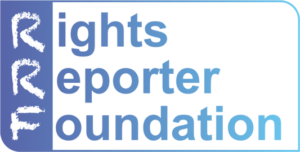How does the Belgrade underground party scene look like trough the eyes on a local anthropologist – read the story of our Serbian EDPI partner.
Underground party culture is one of the biggest youth subcultures in Serbia. As part of a growing global subculture, and a powerful entertainment industry, electronic music lets individuals experience trance and religious rapture, helps them to deal with personal issues, and of course primarily gives them a really good time socially. It is also often said that party culture is closely linked to the use of psychoactive substances. Since I was personally involved in this community in Serbia over the years, I subconsciously learned about the relationship between recreational drug use and the ideology behind the underground electronic music scene. Let me share with the reader my thoughts in this regard. During the late 1990s and at the beginning of the 21th century, the use of psychoactive substances was fairly common among young people attending these parties,. One explanation could be that the popularity of illegal substances was related to living conditions in Serbia by that time. We experienced several wars and bombing, which pushed young people to search for new ways to liberate their minds. The underground party scene was, for some, a perfect way to do it, thanks to the unlimited behavioral freedom, coupled with the sense of belonging to a community. Using drugs gave them a whole new perspective. During that period, the most popular drug was ecstasy, which was cheap, affordable and easily available. There was a wide variety of ecstasy pills available on the market – you could hardly find the same thing twice. Every weekend, there was a new brand of ecstasy on the market. Besides ecstasy, speed was also very popular, while from time to time, even cocaine could be found.
 As an anthropologist, I try to examine this subculture through cultural heritage constructs. I see party subculture as the contemporary intangible cultural heritage of Belgrade and Serbia. It shows that illicit drug use among the youngsters at “rave parties” can be understood and explained as a modern inheritance of spiritual trance and dance. According to my observations, use of drugs at parties varies, depending on the subgenre of electronic music the people listen and dance to. Professionals say that hallucinogenic substances are no longer used in Serbia; experience in the field shows otherwise, however. There is a whole psychedelic wing of the underground party culture. At psychedelic trance parties, one of the most popular drugs is LSD. This is especially true if the party takes place in the countryside, outside the city at any pytrance/goa festival. Magic mushrooms are slightly less available, but similarly popular. In Serbia, both of these substances can be found at a price of 1,000 dinars (~10euros) for LSD, or 2,000 dinars (~20euros) for a portion of magic mushrooms. Speed, cocaine, MDMA and ecstasy are also to be found, in some cases taken in combination with hallucinogenic substances.
As an anthropologist, I try to examine this subculture through cultural heritage constructs. I see party subculture as the contemporary intangible cultural heritage of Belgrade and Serbia. It shows that illicit drug use among the youngsters at “rave parties” can be understood and explained as a modern inheritance of spiritual trance and dance. According to my observations, use of drugs at parties varies, depending on the subgenre of electronic music the people listen and dance to. Professionals say that hallucinogenic substances are no longer used in Serbia; experience in the field shows otherwise, however. There is a whole psychedelic wing of the underground party culture. At psychedelic trance parties, one of the most popular drugs is LSD. This is especially true if the party takes place in the countryside, outside the city at any pytrance/goa festival. Magic mushrooms are slightly less available, but similarly popular. In Serbia, both of these substances can be found at a price of 1,000 dinars (~10euros) for LSD, or 2,000 dinars (~20euros) for a portion of magic mushrooms. Speed, cocaine, MDMA and ecstasy are also to be found, in some cases taken in combination with hallucinogenic substances.


